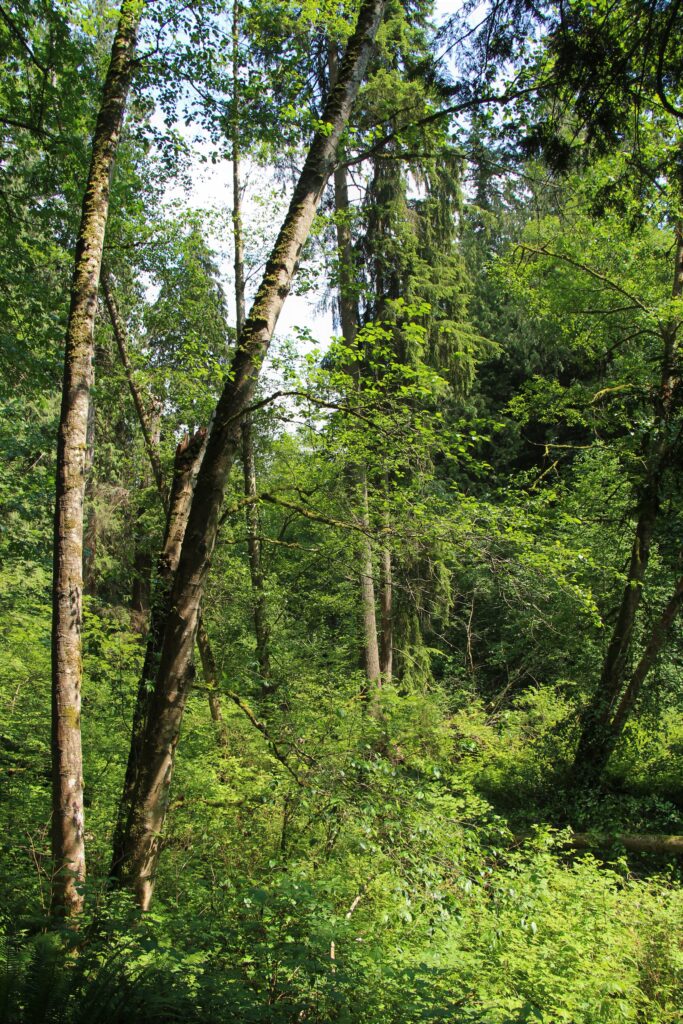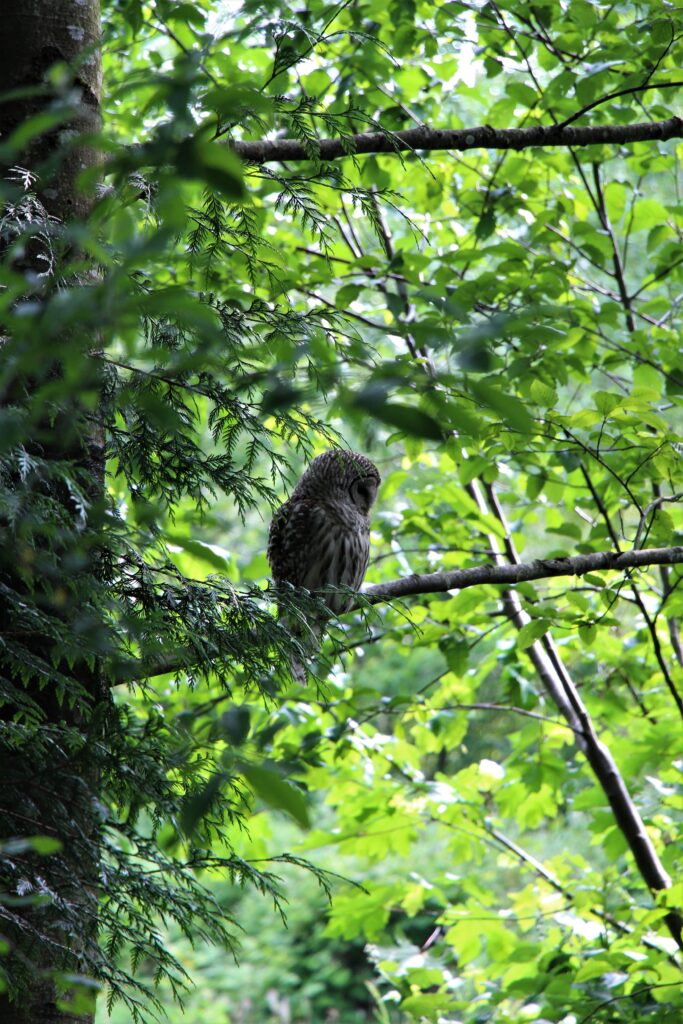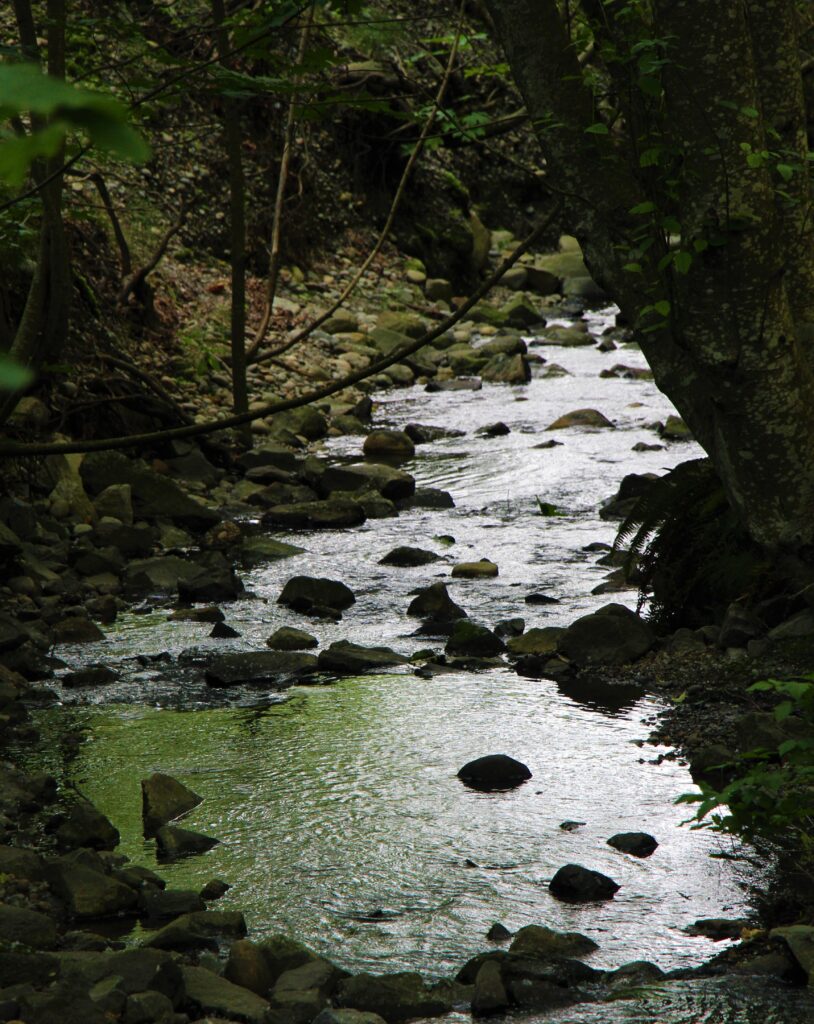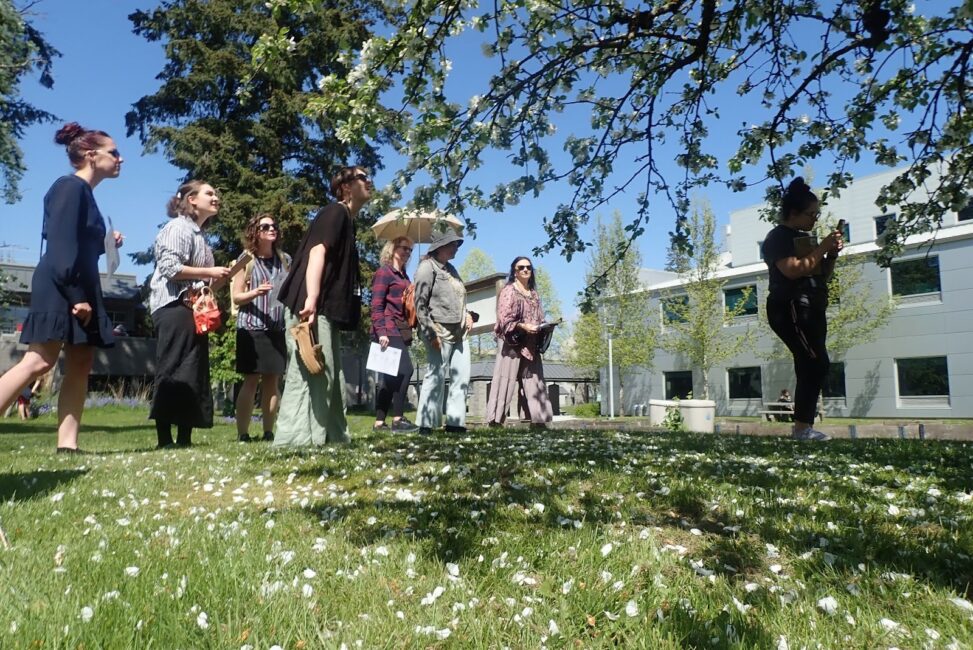by Ahanya Tonse
“In every walk with nature, one receives far more than he seeks.” – John Muir
Attendees at a workshop by Aldone Czajewska about the importance of pollinators. Photo by Lee Beavington
Welcome to the first blog post of KPU Wild Spaces. Does all learning need to happen indoors in a classroom setting, with a teacher at the front of the class? Have you ever wondered what studying in nature feels like? This is a space where you will learn everything about place-based education (PBE) in university.
What is place-based education?
“Place-based education (PBE) is an educational philosophy that emphasizes experiential learning situated in a location relevant to the topic under study.” (KPU Wild Spaces) PBE is a different and sometimes profound learning experience for both students and instructors. It is a link that connects education with the environment and the local community. It helps students explore the real world outside of a classroom setting. In simple words it is looking at the world as a safe, open classroom to learn.
History
Before the foundation of schools and universities students would learn by looking at their surroundings and environment. John Dewey, an educator, was invested in the idea of PBE. Dewey was an advocate of social learning and his idea of PBE was the interaction between students in nature which helps them learn and socialize. “Dewey was a proponent of making learning experiences centered around student interests and developing socially responsible citizens; all of these real-world, meaningful connections that occur in place-based education, contribute to creating educational experiences that result in socially responsible citizens.” (Williams, 99)
Why is PBE important?
PBE was introduced for K-12 learners but it is not as common for universities. With Wild Spaces, KPU took an initiative to introduce PBE into university education. It helps students and instructors interact in a meaningful way outside of the classroom.
Students get a chance to explore the origin of the topics being covered in class and it also helps them enhance their thoughts and ideas. It fosters a bond between students and their community, the history, the unheard stories, such as the Westerman property on the lands of KPU. This property was donated by Ernest and Margaret Westerman. Some instructors take their students to the land to explore and socialize with each other. This not only gives students a chance to interact with each other but also because it fosters a deep connection between students and the land they are on. It nurtures a sense of belonging and empathy towards the land and the contribution made towards our university by the Westerman family.
With an increase in global warming students also get to experience and learn about the beauty of nature and its importance. Feeling a connection with our community makes us appreciate it more and thus PBE plays an important factor in education.
Lee Beavington organized Benefits of the Bog at Richmond Nature Park with Erika Hurth in June, 2023. Photo by Jaden Lewis.
In this world of technology, PBE allows us to experience the real world and encourages us to appreciate it more. When students get a chance to study in nature they also get to socialize with their classmates in person and their instructors on a human level.
References:
Morgan K. Williams. Journal of Inquiry & Action in Education, John Dewey in the 21st Century – ed. (2017). https://files.eric.ed.gov/fulltext/EJ1158258.pdf
KPU (n.d.). What is place-based education?. Wild Spaces. https://dev.wordpress.kpu.ca/wildspaces/what-is-place-based-education/






Leave a Reply